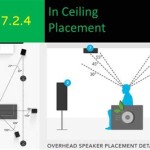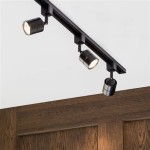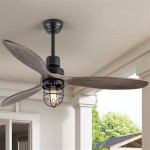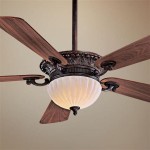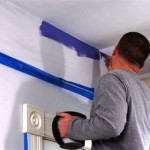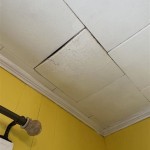Get Rid of Mold in Bathroom Ceiling: A Comprehensive Guide
Mold growth in the bathroom, particularly on the ceiling, is a common household problem. The bathroom environment, characterized by high humidity and fluctuating temperatures, provides an ideal breeding ground for mold spores. Addressing mold growth promptly and effectively is crucial not only for aesthetic reasons but also for maintaining a healthy living environment. This article provides a comprehensive guide to identifying, removing, and preventing mold growth on bathroom ceilings.
Mold is a type of fungus that thrives in damp and dark environments. It reproduces through microscopic spores that are present in the air. When these spores land on a surface with sufficient moisture and organic material, they can begin to grow and form colonies. Common types of mold found in bathrooms include *Cladosporium*, *Aspergillus*, and *Penicillium*. While some molds are relatively harmless, others can trigger allergic reactions, respiratory problems, and other health issues. Therefore, proper mold remediation is essential.
The primary cause of mold growth on bathroom ceilings is excess moisture. Steam from showers and baths, leaky pipes, and inadequate ventilation contribute to elevated humidity levels. When warm, moist air comes into contact with cooler surfaces like the ceiling, condensation forms. This condensation provides the necessary moisture for mold spores to germinate and flourish. Bathrooms lacking proper ventilation, such as those without exhaust fans or windows, are particularly susceptible to mold growth.
Identifying Mold Growth on Bathroom Ceilings
Recognizing mold growth early is essential for preventing widespread infestations. The visual appearance of mold can vary depending on the type of mold, the material it is growing on, and the extent of the growth. Common signs of mold on bathroom ceilings include:
Discoloration:
Mold often appears as black, green, brown, or white spots or patches on the ceiling surface. The discoloration may be subtle at first, gradually becoming more prominent over time.Musty Odor:
A persistent musty or earthy odor in the bathroom, even after cleaning, can be a strong indicator of mold growth. The odor is caused by the release of volatile organic compounds (VOCs) produced by the mold.Visible Growth:
In more advanced cases, visible mold colonies may appear as fuzzy or slimy patches on the ceiling. These colonies can spread rapidly if left untreated.Water Stains:
Water stains on the ceiling may indicate a leak in the plumbing or roof, which can contribute to mold growth. These stains often appear as yellowish or brownish rings.Peeling Paint or Wallpaper:
Moisture trapped beneath paint or wallpaper can cause it to peel or bubble. This is often a sign of underlying mold growth.
Careful inspection of the bathroom ceiling, especially in areas prone to moisture accumulation, is crucial for early detection. Pay close attention to corners, edges, and areas around vents and light fixtures. If you suspect mold growth, it is essential to take action promptly to prevent further spread and potential health risks.
Removing Mold from Bathroom Ceilings
The process of removing mold from a bathroom ceiling depends on the extent of the infestation. For small areas (less than 10 square feet), homeowners can typically handle the removal themselves using appropriate safety precautions and cleaning solutions. For larger infestations, professional mold remediation services are recommended.
Before starting the mold removal process, it is crucial to protect yourself from exposure to mold spores. Wear the following personal protective equipment (PPE):
Respirator:
A respirator mask rated N95 or higher will help prevent inhalation of mold spores.Gloves:
Wear disposable gloves to protect your skin from contact with mold and cleaning solutions.Eye Protection:
Goggles or safety glasses will protect your eyes from splashes and airborne particles.Protective Clothing:
Wear long sleeves and pants to minimize skin exposure. Consider wearing disposable clothing that can be discarded after the cleanup.
Ensure adequate ventilation in the bathroom by opening windows and doors, if weather permits. You can also use a fan to circulate air in the room. This will help to dry the area and prevent the spread of mold spores to other parts of the house.
Several effective cleaning solutions can be used to remove mold from bathroom ceilings. These include:
Bleach Solution:
Mix one part bleach with ten parts water. Apply the solution to the moldy area using a sponge or cloth. Allow the solution to sit for 10-15 minutes, then scrub the area thoroughly. Rinse with clean water and dry completely. *Caution: Do not mix bleach with ammonia or other cleaning products, as this can create toxic fumes.*Vinegar:
White vinegar is a natural and effective mold killer. Pour undiluted vinegar into a spray bottle and spray it onto the moldy area. Let it sit for an hour, then wipe clean with a damp cloth.Baking Soda:
Baking soda is a mild abrasive that can help to remove mold and absorb moisture. Mix baking soda with water to form a paste. Apply the paste to the moldy area and let it dry. Then, scrub the area with a brush or sponge and rinse with clean water.Hydrogen Peroxide:
Hydrogen peroxide is a powerful oxidizing agent that can kill mold and disinfect surfaces. Pour 3% hydrogen peroxide into a spray bottle and spray it onto the moldy area. Let it sit for 10-15 minutes, then wipe clean with a damp cloth.Commercial Mold Cleaners:
Several commercial mold cleaners are available at home improvement stores. Follow the manufacturer's instructions carefully when using these products.
After applying the cleaning solution, scrub the moldy area thoroughly with a brush or sponge to remove any remaining mold. Rinse the area with clean water and dry it completely with a clean cloth or towel. Ensure that the area is completely dry to prevent the mold from returning.
For porous surfaces like drywall or ceiling tiles, the mold may have penetrated deeper into the material. In these cases, it may be necessary to remove and replace the affected sections of drywall or ceiling tiles. Cut out the moldy section carefully, being sure to contain the dust and debris. Dispose of the contaminated material properly in a sealed plastic bag.
Preventing Future Mold Growth on Bathroom Ceilings
Preventing mold growth is often more effective than dealing with an existing infestation. By controlling moisture levels and maintaining proper ventilation, you can create an environment that is less conducive to mold growth.
Improve Ventilation:
Install or upgrade the bathroom exhaust fan. Ensure that the fan is properly sized for the size of the bathroom. Use the exhaust fan during and after showers and baths to remove excess moisture. If the bathroom has a window, open it to allow fresh air to circulate.Control Humidity:
Use a dehumidifier to reduce humidity levels in the bathroom, especially during humid months. Aim for a humidity level below 50%.Fix Leaks:
Repair any leaks in the plumbing or roof promptly. Even small leaks can contribute to mold growth over time.Clean Regularly:
Clean the bathroom regularly to remove soap scum, hair, and other organic materials that can provide a food source for mold. Use a mold-inhibiting cleaner on shower walls, ceilings, and other surfaces prone to moisture.Wipe Down Surfaces:
After showering or bathing, wipe down wet surfaces, such as shower walls and the ceiling, to remove excess moisture.Use Mold-Resistant Paint:
When painting the bathroom ceiling, use a mold-resistant paint. These paints contain additives that inhibit the growth of mold and mildew.Ensure Proper Insulation:
Proper insulation can help to prevent condensation on the ceiling. Insulate pipes and walls to maintain consistent temperatures and reduce temperature differentials that can lead to condensation.Monitor for Signs of Mold:
Regularly inspect the bathroom ceiling for signs of mold growth. Early detection and prompt action can prevent small problems from becoming larger infestations.
By implementing these preventative measures, you can significantly reduce the risk of mold growth on your bathroom ceiling and maintain a healthy and comfortable living environment. Remember, maintaining a dry and well-ventilated bathroom is the key to preventing mold problems.
In situations where mold growth is extensive or if you are experiencing health problems related to mold exposure, it is essential to consult with a professional mold remediation company. These companies have the expertise, equipment, and training to safely and effectively remove mold and address the underlying causes of the infestation.
Professional mold remediation typically involves the following steps:
Assessment:
A thorough inspection of the property to identify the extent of the mold growth and the source of moisture.Containment:
Sealing off the affected area to prevent the spread of mold spores to other parts of the house.Removal:
Removing the mold using specialized equipment and techniques.Cleaning:
Cleaning and disinfecting the affected area to remove any remaining mold spores.Restoration:
Repairing or replacing any damaged materials, such as drywall or ceiling tiles.
Choosing a reputable and experienced mold remediation company is crucial. Look for companies that are licensed, insured, and certified by organizations such as the Institute of Inspection, Cleaning and Restoration Certification (IICRC). Obtain multiple quotes and ask for references before hiring a company.
Understanding the causes of mold growth, identifying the signs of mold, removing mold safely and effectively, and implementing preventative measures are all essential for maintaining a healthy and mold-free bathroom environment. Regular cleaning, proper ventilation, and prompt attention to leaks and moisture problems can significantly reduce the risk of mold growth on bathroom ceilings.

How To Permanently Remove Mold From Bathroom Ceiling With Vinegar

How To Get Rid Of Mold In Bathroom Ceiling Step By Guide Aloraircrawlspace

Bathroom Ceiling Mold Removal When To Clean Call Branch Environmental

6 Steps To Get Rid Of Mold On The Bathroom Ceiling Redfish Inspections

Detecting And Preventing Mold Growth On Your Bathroom Ceiling Trusscore

Professional Tips For Bathroom Ceiling Mold Removal

Mold On Bathroom Ceiling How To Remove From Ceilings

How To Remove Mould From Ceilings Simply Spotless Cleaning

How To Get Rid Of Mold On Your Bathroom Ceiling Aqa

Mold On Walls The Key To Permanent Removal Is Knowing Where It Hides


